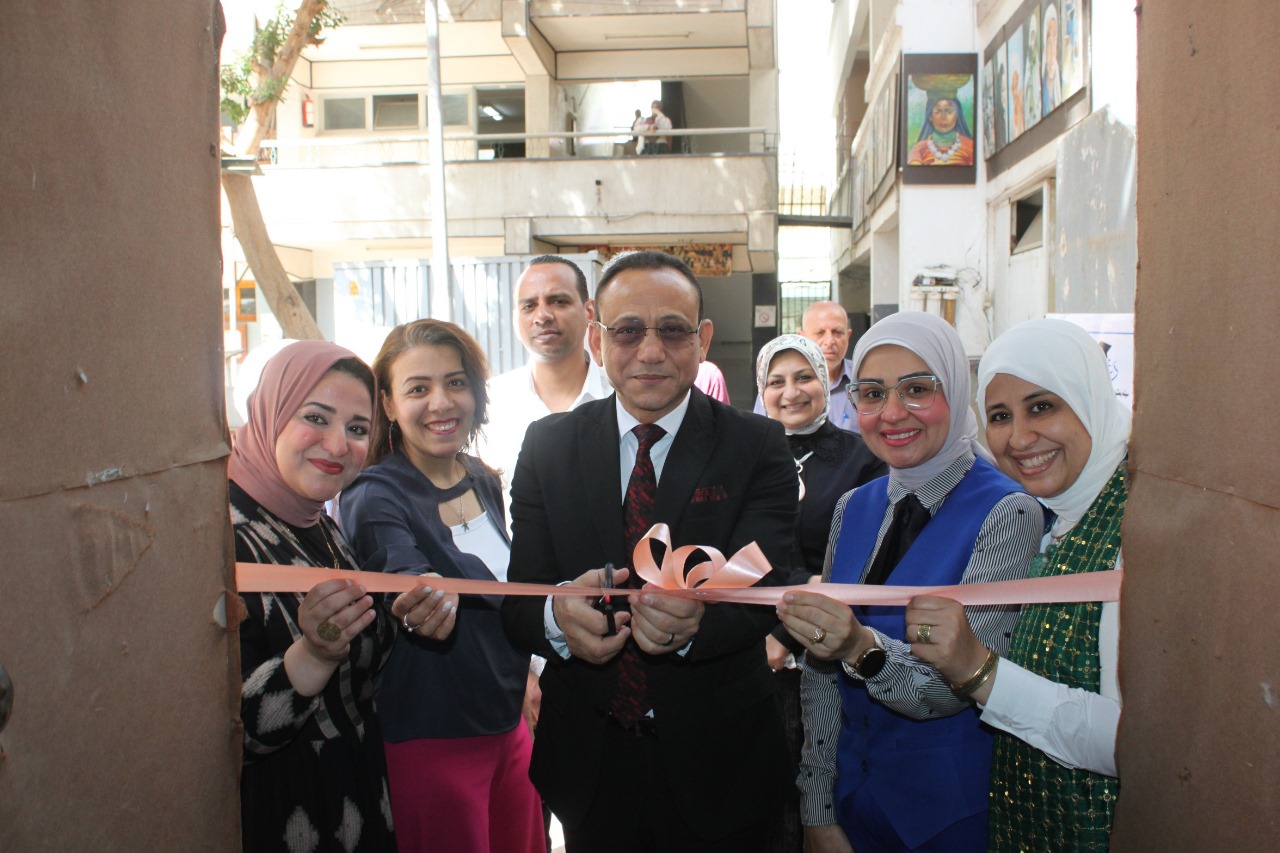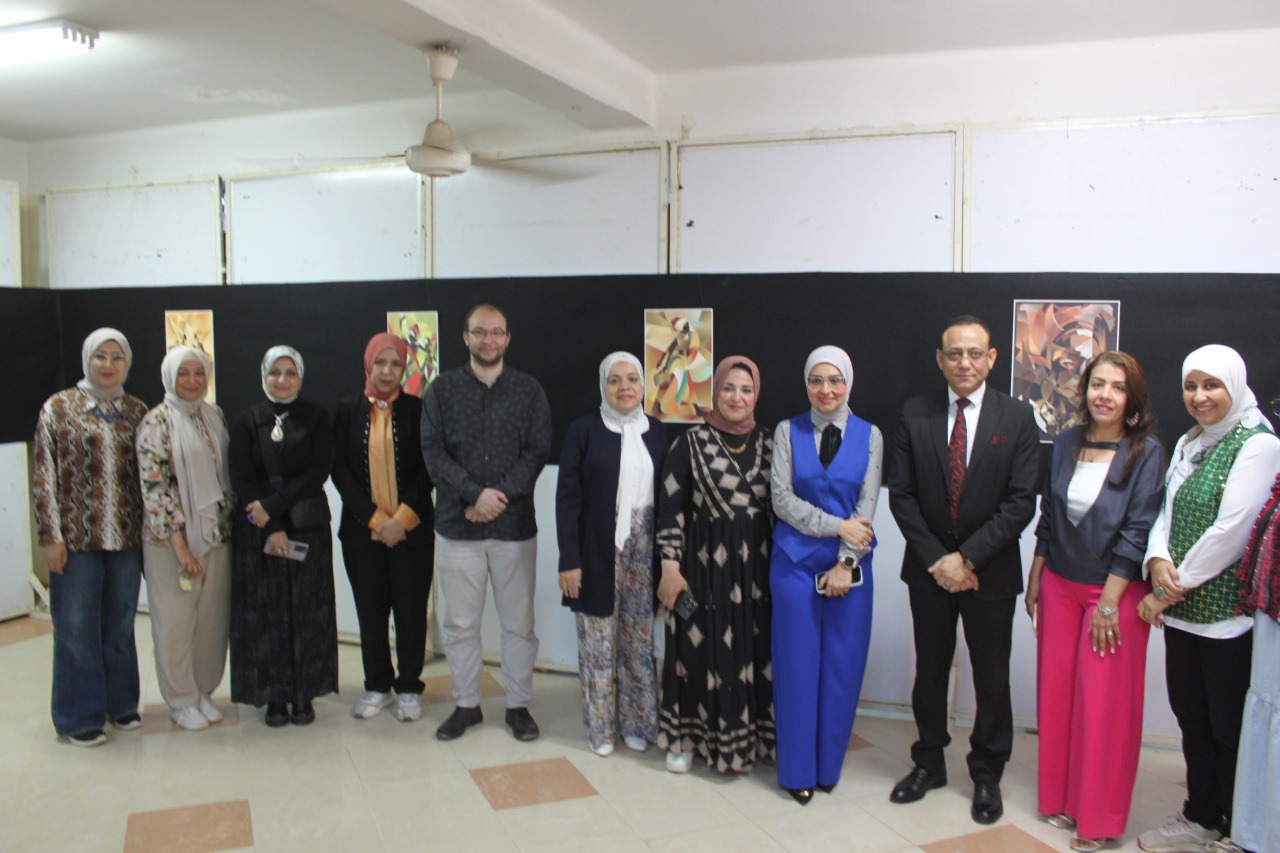The Faculty of specific education at Assiut University organized an art exhibition entitled "African engineering", Dr. Salwa Maher Ahmed Zahran, assistant professor at the Department of art education, under the auspices of Dr. Ahmed El-Minshawy, president of the University, and under the supervision of Dr. Jamal Badr, vice president for graduate studies and research, and Dr. Yasmin Al-kahki, dean of the college.
Dr. Ahmed El-Minshawy praised the organization of the exhibition, noting that it reflects the ability of students to employ art as an effective tool for expressing cultural identity and cultural affiliation. He stressed that these exhibitions represent a platform for creativity within the University, and reflect its keenness to discover and nurture young talents, and encourage meaningful arts that contribute to improving public taste and promoting cultural dialogue through plastic arts, as a global language that transcends geographical and cultural boundaries.
The exhibition was held under the supervision of Dr. Nariman Saeed, vice dean for graduate studies and research, and Dr. Hala Salah, head of the art education department, and in the presence of Dr. Mohammed Abdul Basit, vice dean for community service and environmental development, along with a number of faculty members, staff and students.
For his side, Dr. Jamal Badr explained that the exhibition is part of the promotion exhibitions for faculty members, and is a distinctive example of the intellectual and visual creativity that art can provide, pointing to the balance shown by the paintings between geometric precision and creative freedom, by presenting non-representative formations of men's and women's bodies in the African context.
Dr. Yasmin Al-kahki also explained that the exhibition's paintings followed the "geometric abstraction" style, which is one of the modern visual arts, based on two-dimensional geometric shapes such as triangles, circles, straight lines and curves, in regular and dynamic configurations without reference to elements of reality or nature.
Dr. Salwa Maher pointed out that the exhibition included ten paintings based on geometric structure and color as the main elements, rather than direct depictions of bodies or realistic scenes, which gave the works a sense of harmony, balance and accuracy. Color also played an active visual and emotional role through the use of bold and contrasting colors to create visual effects such as suggesting movement or depth, using digital graphic programs in the design and execution of paintings.








